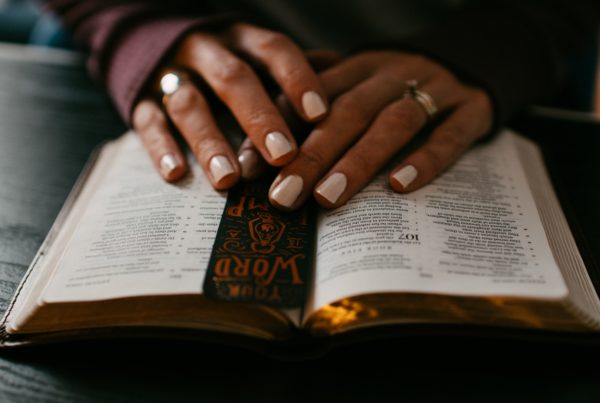Have you ever been at a staff meeting to plan an event, class, service, or project, and one voice spoke clearly at just the right moment: “Have we thought about how this will affect [insert name of particular individual or group you are thinking about]?” Perhaps you have been that voice. In seeking to include students with varied abilities in Christian schools, Barbara Newman pioneered an inclusive program at Zeeland Christian school, and went on to establish the Church Division of CLC Network (now All Belong), always asking, “Have we thought about how this will affect children and adults with varied abilities?” The impetus for beginning the Church Division came from seeing what worked in her school and realizing that her students’ families were often not welcome in their churches because the church was not equipped with strategies and did not know what worked. That story is common in the U.S., and people with disabilities around the world are possibly the largest people group yet to be reached with the Gospel1. There are many great ideas from the world of educational inclusion that can be used to welcome, include, and support full participation of people of all abilities in the body of Christ.

The body of Christ is not complete without each piece. At All Belong, we use our infamous green-and-pink puzzle pieces, quoting 1 Corinthians 12, verse 18 (“God has arranged each one of the parts in the body just as he wanted them to be.”) and verse 27 (“You are the body of Christ, and each one of you is a part of it.”) We even use a call-to-worship from Romans 15:7 (“Accept one another, then, just as Christ accepted you, in order to bring praise to God,”) urging each one to “make Heaven a noisier place” by bringing praise to God through the acceptance of His children. All of His children, of all abilities. That means thinking about how worship practices will impact persons with varied abilities. It means thinking for persons with Autism spectrum disorder, learning differences, physical disabilities and sensory differences.
I’ve yet to meet a church leader who does not see the biblical call to include people of all abilities, but every church leader wants to know how to do it. Since inclusive education has been All Belong’s focus for over 3 decades, we have learned to take best practices for building belonging in schools and interpolate them for church settings. The beautiful thing is, the church doesn’t have to know diagnoses or labels or have IEP’s or official records in order to start supporting individuals. If someone pays attention better by having a fidget, we can offer fidgets. If someone hears better by connecting to a hearing loop, we can offer that. If someone struggles with social interaction, we can build in supports such as buddies, a role or job to perform during social time to give purpose and focus to the interaction, or a welcome story to guide them through it. We can use visual schedules on a wall or in a folder, or in our order of worship. We can just try things. We can use information-gathering tools such as an intake form2 that simply asks what a person enjoys and is good at (greens) and what areas might be difficult (pinks), along with basic contact information. Here is an example from a webpage (and downloadable PDF) called Best Practices for Building Belonging in Congregations showing how a preacher or speaker can utilize practices that have proven effective in schools:
- Sticking to one “big idea” (main concept) for a sermon or learning session.
- Using visuals, like PowerPoint or Prezi slides and/or concrete objects to convey that main idea in multiple ways.
- Involving multiple senses as often as possible –in that area, perhaps schools are interpolating something from the church. It was Jesus who taught us to remember using a multisensory object lesson in the Last Supper. His words were paired with something to feel, smell and taste, making it much easier to remember it.
- Allowing for and encouraging interaction and movement, especially if the session or sermon is longer than 20 minutes.
- Thinking for different learning abilities and levels of understanding of the language in the words and explanations used.
- Providing an outline, written handout, worksheet, or notes page ahead of time so that learners can receive the information the way they best take it in.
Each time I partner with a congregation to build belonging for persons of all abilities, it is my joy to explore the possibilities of the church environment while utilizing best practice strategies learned in school settings.
There are Christian educators who say learning and faith are intertwined.3 It is my hope that congregations will welcome learning about best practices for inclusive community in the same way congregations seek to grow in faith. Then, I believe we will see communities grow “until we all reach oneness in the faith and in the knowledge of the Son of God, [growing spiritually] … reaching to the measure of the fullness of Christ [manifesting His spiritual completeness and exercising our spiritual gifts in unity].” (Ephesians 4:13, AMP). We will be complete puzzle-piece communities.
References:
1 See All Belong’s Beliefs, Facts & Figures, available from allbelong.org/for-churches/roles.
2 All Belong’s Sample, editable intake form is available for download at allbelong.org/informational/church-resource-downloads-form/
3 Murison, Craig B. and Benson, David M. (2018). Reimagining Christian schools as revelatory communities. In J.M. Luetz et al. (Eds.), Reimagining Christian Education (pp. 75-88). Springer, Singapore. https://doi.org/10.1007/978-981-13-0851-2_5



